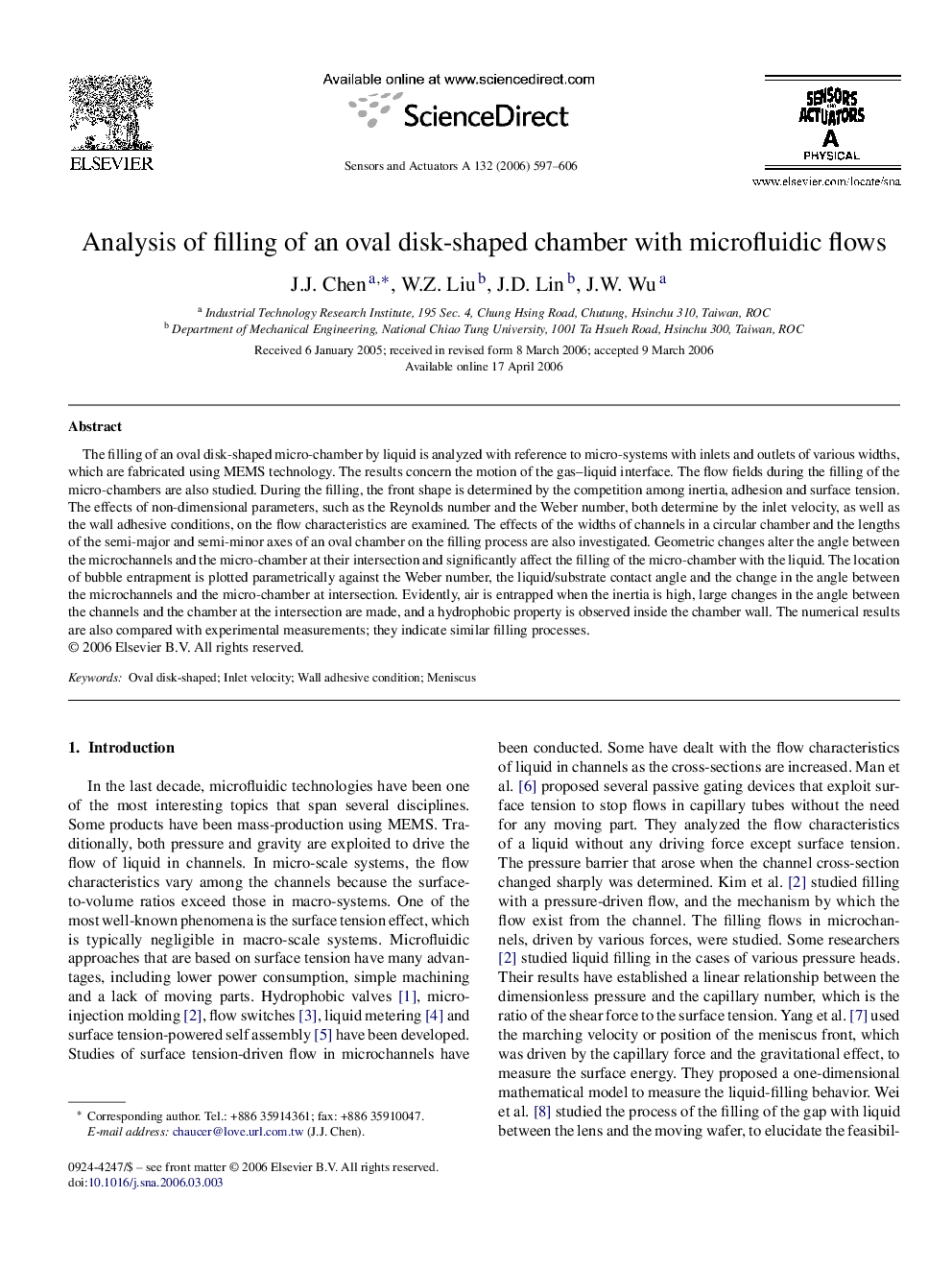| Article ID | Journal | Published Year | Pages | File Type |
|---|---|---|---|---|
| 750050 | Sensors and Actuators A: Physical | 2006 | 10 Pages |
The filling of an oval disk-shaped micro-chamber by liquid is analyzed with reference to micro-systems with inlets and outlets of various widths, which are fabricated using MEMS technology. The results concern the motion of the gas–liquid interface. The flow fields during the filling of the micro-chambers are also studied. During the filling, the front shape is determined by the competition among inertia, adhesion and surface tension. The effects of non-dimensional parameters, such as the Reynolds number and the Weber number, both determine by the inlet velocity, as well as the wall adhesive conditions, on the flow characteristics are examined. The effects of the widths of channels in a circular chamber and the lengths of the semi-major and semi-minor axes of an oval chamber on the filling process are also investigated. Geometric changes alter the angle between the microchannels and the micro-chamber at their intersection and significantly affect the filling of the micro-chamber with the liquid. The location of bubble entrapment is plotted parametrically against the Weber number, the liquid/substrate contact angle and the change in the angle between the microchannels and the micro-chamber at intersection. Evidently, air is entrapped when the inertia is high, large changes in the angle between the channels and the chamber at the intersection are made, and a hydrophobic property is observed inside the chamber wall. The numerical results are also compared with experimental measurements; they indicate similar filling processes.
